
Behold the Barns of La Crosse County
(written and modern photographs by Anita Taylor Doering, Archives staff)
Dedicated to Jeff Rand who found his way from alfalfa fields to the library field and who retired from LPL after 37 years of tireless service to the La Crosse community
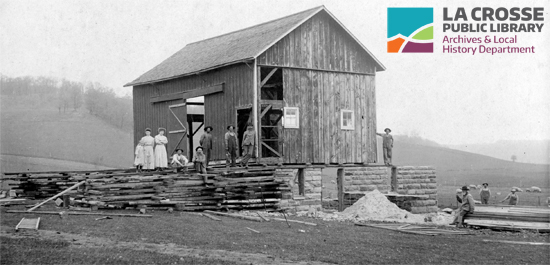
A bank style barn that is being rolled onto a stone foundation. Unknown location.
Most of the barns that you see today in La Crosse County date from the late nineteenth- to mid-twentieth-century. Gone are the original buildings used to house small numbers of animals. Those barn designs were strongly influenced by the ethnicity of the family building them and are what are known as immigrant barns.
While the Native People did some small-scale farming, the construction of a farmstead was a white settler phenomenon. Early farming in La Crosse and Wisconsin focused on wheat production – a cash crop that yielded good results. But as the soil became depleted of its nutrients and the climate became drier during the 1860s, the chinch beetle cleaned out many wheat fields.
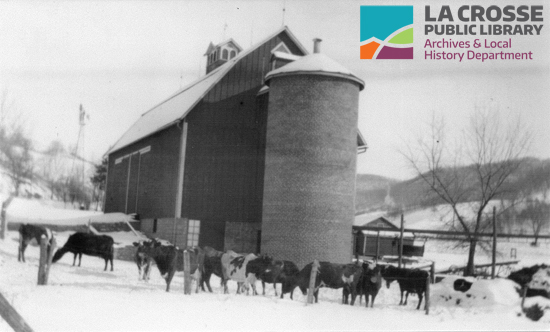
George G. Baier barn and dairy cows on Ebner Coulee Road. This photo dates from 1908-1919 and is courtesy of Terry Baier.

The George G. Baier farm on Ebner Coulee Road. The bank style barn and tile silo can still be seen today. When George abandoned truck farming to create the Grand Dad View Dairy, he needed a different style of barn in which to milk and feed his guernsey cows. He built this barn in 1908 by using boards from the old barn. This photo dates circa 1919-1920 and is courtesy of Terry Baier.
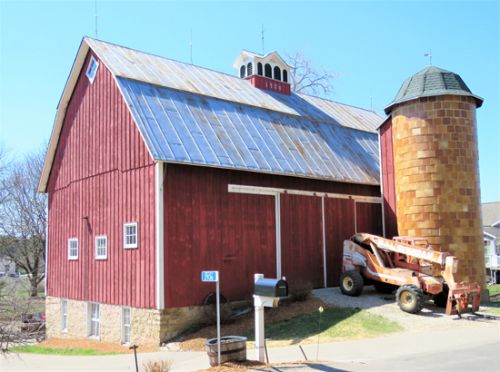
The same 1908 Baier family barn in 2020
When dairy farming with purebred variety of milking cows in Wisconsin was introduced by William Hoard in the mid-1870s, larger barns were needed to house, feed and breed dairy cows. Many of these plans came from the College of Agriculture at the University of Wisconsin through the extension program. Many farmers went through the “short course” for agriculture, particularly after 1892 when the dairy hall was built.
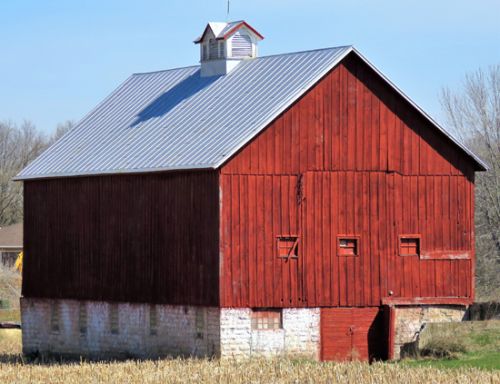
Bank style barn with a gable roof, Town of Barre, County Road “O” in 2020
One of the ways to tell a barn style is by its roof type. The older styles are gable roofs so two planes that meet at an angle form the peak of the roof. This style was also typical of granaries or wheat barns.
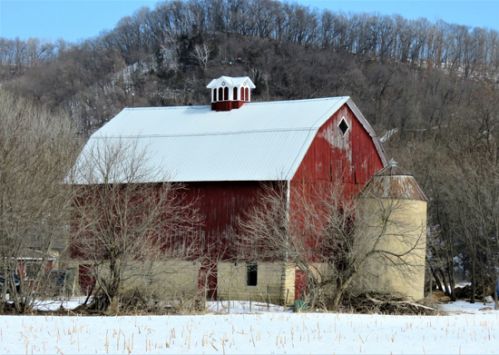
English or straight gambrel roof barn, Town of Greenfield, County Road “M” in 2020
Another roof type is the gambrel roof which came in two varieties: English or straight and Dutch. In the straight type, the eaves go straight down, whereas the Dutch variety has slight curves at the end of the eaves to help water to run off of either end of the barn.
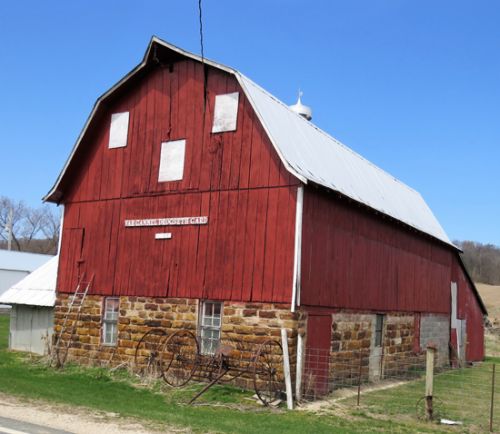
Dutch or curved gambrel roof barn, Town of Farmington, County Road “D” in 2020. When the author stopped to photograph this barn, the owner said that it was built in 1945 on top of an older foundation.
This roof style allowed for larger hay mows to be stored, and these barns are usually much longer than their gabled cousins, but which was more complex to build. This balloon framing technique eliminated much of the cross-framing needed for a gable roof, and opened up more of the central lofts for hay storage, while the milking parlor was below.
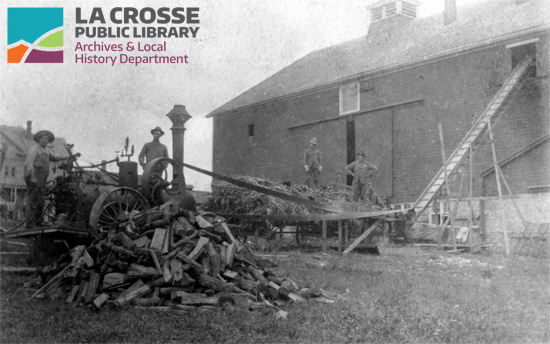
Farm workers are loading what appears to be loose hay into the upper reaches of the barn using an elevator driven by large belts attached to a tractor’s drive shaft. Location unknown.
Also happening at this time was the switch from square hay bales to large round bales that shed water off of the hay out in the field. These roof types allowed farmers to maximize hay storage by accommodating the round bales.
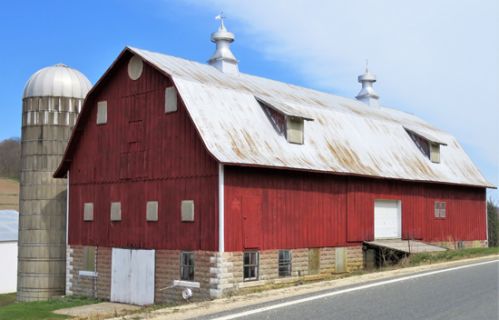
Bank barn with a Dutch gambrel roof, Town of Farmington, County Road “D” in 2020
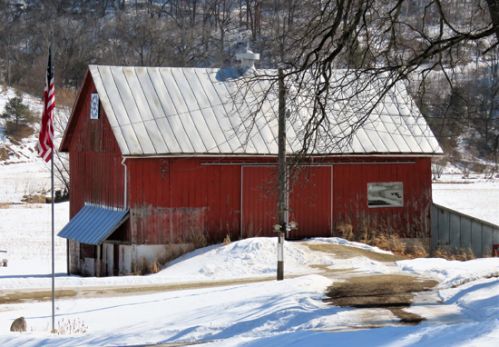
Bank barn with a gable roof, Town of Greenfield, County Road “M” in 2020
However, the quintessential dairy barn in Wisconsin is the bank barn. The roof style may vary, but it is a two-story structure where the main floor housed cattle and the upper floor stored hay or sometimes grain. By building the barn into a bank, the farmer could drive a tractor and unload hay directly into the barn.

Arched roof, Town of Bangor, County Road “JB” in 2020. The arched structure is an addition onto an existing gambrel roof barn seen in the back.

Arched roof, Town of Burns, County Road “DE” in 2020
The arched roof, with laminated rafters and an internal structure quite different from the gable or gambrel roofed barns, began in the early twentieth century as the availability of lumber declined and it really became popular in the 1940s as building supplies in general were in short supply.
Another innovation was introduced at the Wisconsin State Fair in 1948, that of the blue steel Harvestore silo. These began to replace the stone, brick, concrete or tile silos associated with dairy farming. Today the metal pole barn is the newer building of choice by farmers.
The countryside vistas as one travels throughout the Driftless Region are still dotted with many different styles and colors of barns. Some continue to house dairy cattle, while others have been put to different uses. Some languish in need of repair, while others are celebrated and restored.
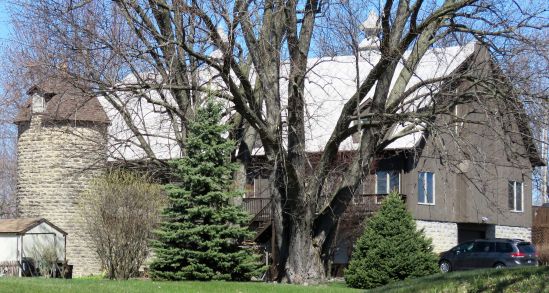
A barn near Holmen that has been repurposed as a residence in 2020
